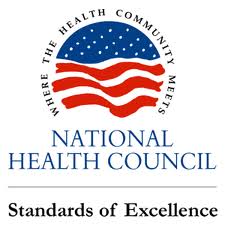Ask the Expert: Skin Rashes and Sjögren's

Skin rashes most certainly occur in the setting of Sjögren’s. As opposed to many of the other autoimmune skin rashes that I see in my autoimmune dermatology clinic, there are no rashes that are specific for Sjögren’s. In other words, I cannot look at a rash in a Sjögren’s patient and immediately tell them that they have Sjögren’s. In comparison, I can often look at a lupus rash and tell the patient they have underlying lupus. That being said, Sjögren’s patients exhibit a variety of skin rashes that are important to recognize and know when to see a board-certified dermatologist.
By and far the most common skin conditions associated with Sjögren’s are xerosis, or clinically dry skin, and eczematous dermatitis. These are caused primarily by barrier dysfunction of the skin. Gentle skin care practices and liberal moisturizers are the best way to prevent these common skin eruptions. When caring for your skin you should take no more than one short, lukewarm shower per day. You should remain in the shower for less than 10 minutes. Soaps like Dove sensitive and VanicreamTM, can be utilized as they will not strip your skin. If a wash cloth is used while bathing, it should be limited to areas that give off body odor like the armpits, genital, and buttock areas, in order to not disrupt the skin barrier. Immediately after getting out of the shower, you should pat dry and then apply a moisturizer. Ointments are the best moisturizers followed by creams. Lotions are not typically moisturizing enough for patients with Sjögren’s. The best ointments are Vaseline® or Aquaphor®. If an ointment is too greasy for your taste, cream moisturizers like CeraVe®, VanicreamTM, Eucerin®, or Aveeno®can be used. For itchy skin, Sarna Original lotion can give immediate relief especially when stored in the refrigerator. If scaly, dry skin is present, utilizing moisturizers with lactic acid, urea, or salicylic acid can be used. Examples include: AmLactin®, CeraVe® SA, and Eucerin® Roughness Relief. If your rash is not responding to moisturizers and gentle skin care practices, a prescription corticosteroid cream or a steroid-sparing anti-inflammatory cream may need to be prescribed by your physician.
If you develop a purple-to-red rash that does not lighten, or blanch, with pressure, ulcerations of the skin, or a purple net pattern on your skin, this should prompt you to see a dermatologist for evaluation. Rashes that are associated with purpura (blood spots) can represent vasculitis, an inflammation of the blood vessels. Although these rashes are not as common as the ones discussed above, they are important to recognize in Sjögren’s patients and should be seen quickly by a dermatologist.
Natalie Wright, MD, FAAD
This information was first printed in the Foundation's patient newsletter for members.


